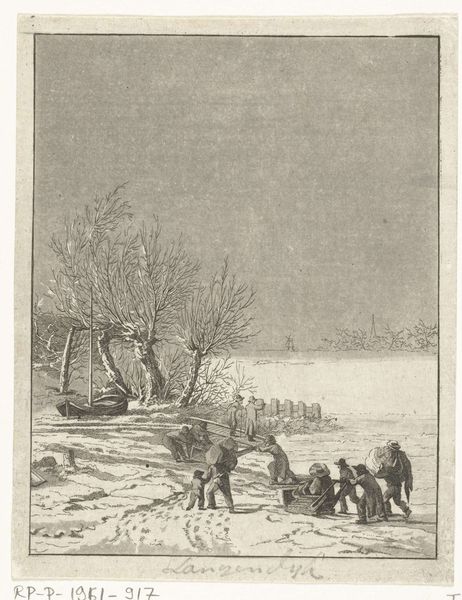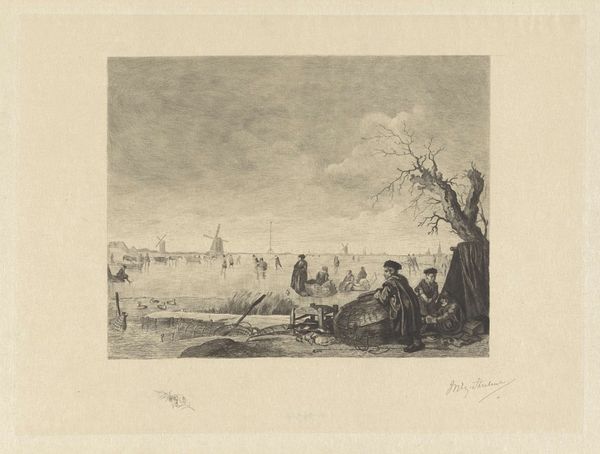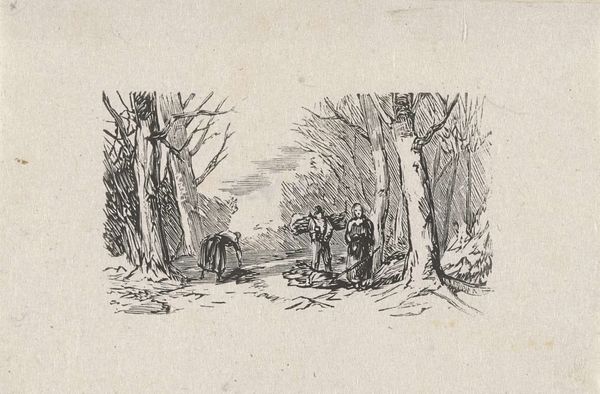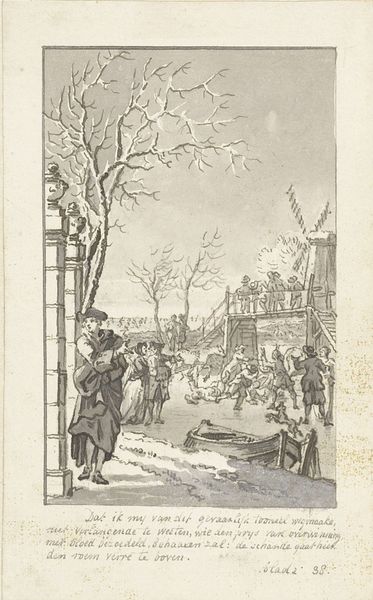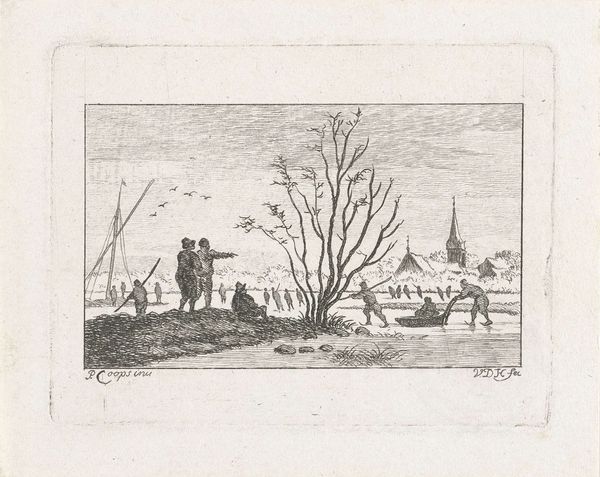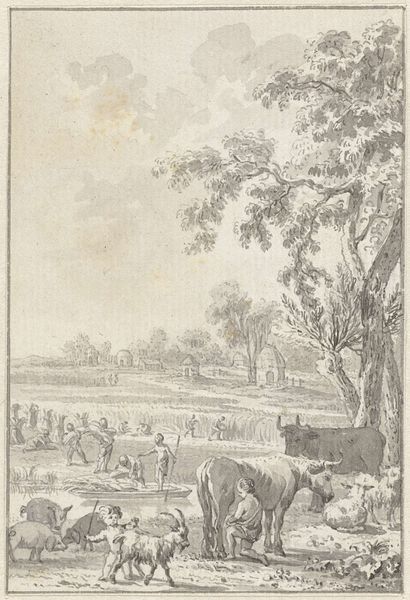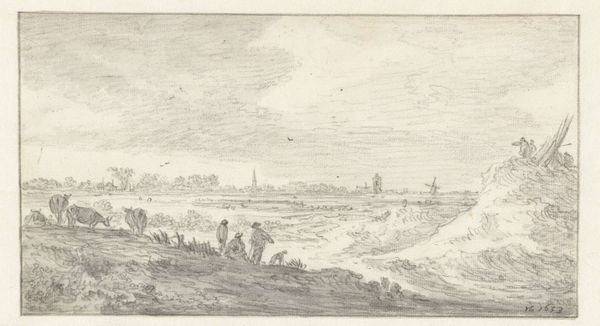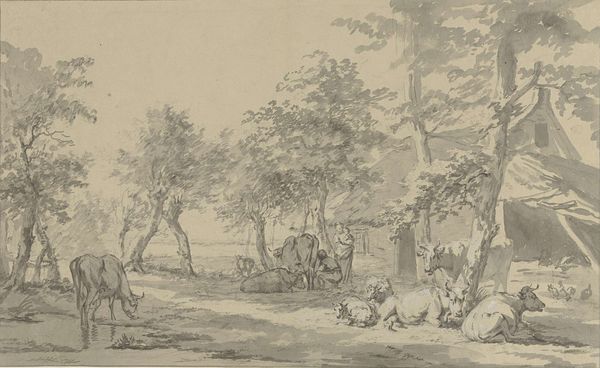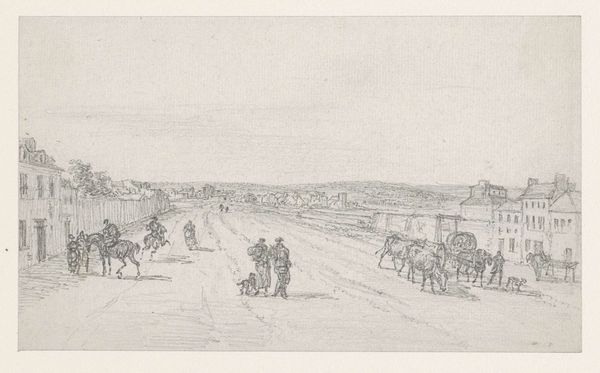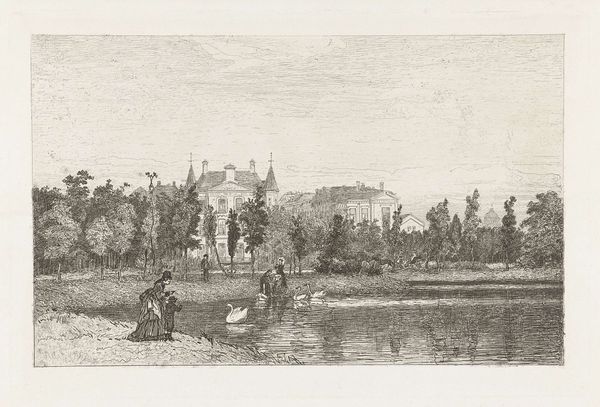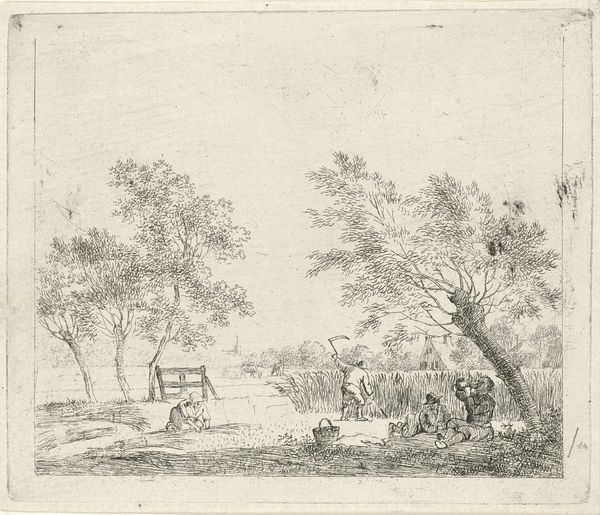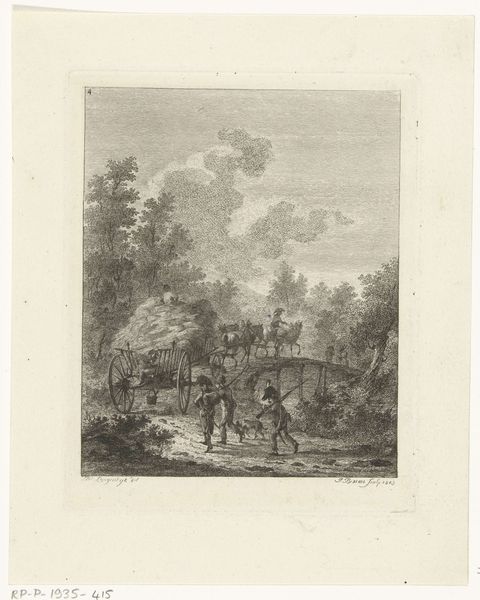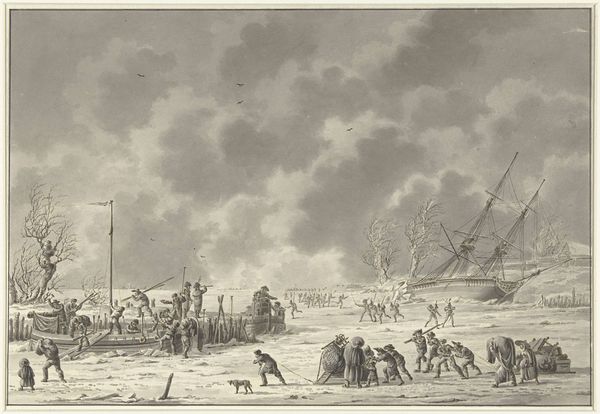
drawing, paper
#
drawing
#
landscape
#
paper
#
genre-painting
#
realism
Dimensions: height 128 mm, width 102 mm
Copyright: Rijks Museum: Open Domain
Editor: So this is "Frozen River with Children Sledding," a drawing on paper by Joannes Bemme, made before 1841. It's a surprisingly detailed winter scene, given its small scale. I’m curious, how would you interpret this work? Curator: Well, initially, it’s easy to see it as a simple genre scene, but considering the time period, I think there's more to unpack about its representation of labour and childhood. These children aren’t idyllically playing; they are actively engaged in work, pulling sleds and transporting goods. Editor: I hadn't considered the work aspect. It definitely shifts the feel, doesn’t it? How does it connect to larger social issues of that era? Curator: In early 19th century Netherlands, child labour was common. This image, whether intentional or not, gives us insight into the realities of working-class families and the blurring lines between childhood innocence and economic necessity. We might ask ourselves, how does it either critique or normalize these conditions? Does the artist attempt to glorify this harsh reality or just plainly mirror his time? Editor: That's fascinating. I was so focused on the visual simplicity of the landscape. What about the realism aspect? Curator: Yes, let's look at how the “Realism” label assigned to the drawing plays into the social context. Realism aimed to depict life as it was, without idealizing it. Therefore, the gritty depiction of working children, fits the bill. Are the figures generalized types? Or based on actual observations? These questions challenge us to see beyond a pleasant winter scene. Editor: I'm seeing this drawing in a totally new light. It’s no longer just a picture of kids having fun; it’s a complex document of social realities. Curator: Exactly! It encourages us to engage with history not just as a collection of events but as lived experience that reflects underlying societal power structures and conditions. Every picture tells many stories!
Comments
No comments
Be the first to comment and join the conversation on the ultimate creative platform.
